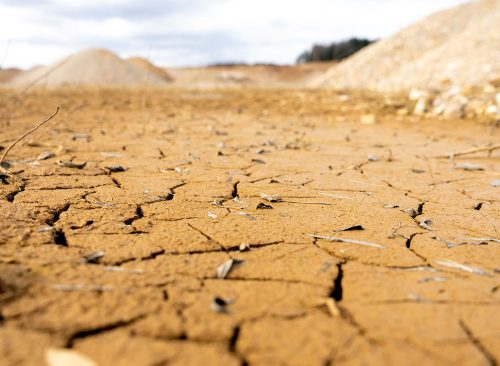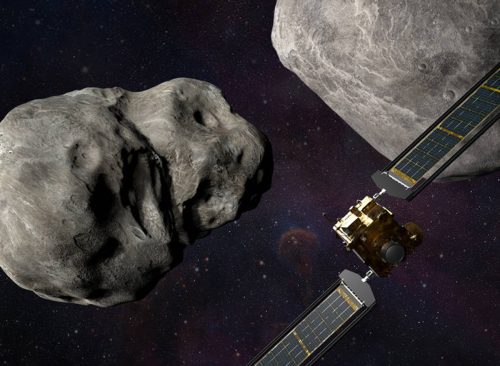Photos Show “Planet Killer” Asteroid Lurking in the Inner Solar System That Could One Day Hit Earth, Scientists Warn
Asteroid this size would cause "Mass Extinction.”

Well, yikes—a huge asteroid is floating around the inner solar system, and scientists warn it could someday hit Earth. The nearly mile-wide space rock, dubbed 2022 AP7, has been described as a “planet killer” and a “potentially hazardous asteroid” (PHA). And its current orbit will cross that of Earth, experts say.
2022 AP7 is one of three recently discovered near-Earth asteroids (NEAs) that scientists are watching, according to a new study published in The Astronomical Journal. The two smaller asteroids are called 2021 PH27 and 2021 LJ4. Discovered at the Cerro Tololo Inter-American Observatory in Chile, they’re designated as near-Earth asteroids because they come within 1.3 astronomical units (121 million miles) of the sun. The researchers say 2022 AP7 is the largest PHA discovered since 2014 and probably in the top 5% of the largest ever found. What would happen if it were to strike Earth? Read on to find out more.

Lead study author Scott Sheppard wrote that if an asteroid the size of 2022 AP7 were to strike Earth, the effects would be devastating. “Any asteroid over 1km in size is considered a planet killer. The Earth’s surface would likely cool significantly from sunlight not getting to the planet.
It would be a mass extinction event like hasn’t been seen on Earth in millions of years.” 2022 AP7 has an orbit that might someday overlap with Earth’s. But there are some differences between the two trajectories.

Experts say the asteroid’s orbit is elliptical, so its distance from Earth changes. 2022 AP7 takes about five years to orbit the sun. At its closest, 2022 AP7 is about 3 million miles from Earth; at its farthest, it’s 600 million miles away. In March 2022, the asteroid was 130 million miles from Earth, but it won’t be that close again until March 2027.
Sheppard told the Daily Mail that a collision with Earth won’t happen anytime soon. “Slowly, over time, the asteroid will start to cross Earth’s orbit, closer to where the Earth is,” he said. “But this will be centuries into the future, and we do not know the orbit of 2022 AP7 precisely enough to say much about its dangers centuries from now.”

Boiling things down: “It has no chance to hit the Earth, currently,” said Sheppard. Jay Tate, director of the National Near Earth Objects Information Center, told the Guardian that he was not particularly nervous about 2022 AP7. “At the moment, anyway, the impact probability is fairly low. I wouldn’t say negligible, but fairly low.”

In September, NASA smashed the DART spacecraft directly into an asteroid to see if it could disrupt its orbit, something that could come in handy if Earth were in the path of an apocalyptic asteroid strike. The $325 million craft—about the size of a vending machine—was directed at the asteroid Dimorphos, about 6.8 million miles away from Earth.
NASA says the mission was successful, as the craft seemingly nudged the asteroid off its orbit. “As far as we can tell, our first planetary defense test was a success,” said Elena Adams, DART’s mission systems engineer at the Johns Hopkins University Applied Physics Laboratory (JHUAPL), after the impact. “I think Earthlings should sleep better. Definitely, I will.”
RELATED: The 10 Most “OMG” Science Discoveries of 2022

The European Space Agency says there are more than 30,000 near-earth asteroids (NEAs) in the solar system. They’re space rocks—occasionally huge ones—that revolve around the sun on paths relatively close to Earth’s orbit. And 1,425 of them have a “non-zero chance” of hitting the earth.
Of the 30,039 NEAs, about 10,000 are larger than 460 feet in diameter, and 1,000 are larger than 3,280 feet in diameter. The 1,425 that have a “non-zero chance of impact” are being watched closely by astronomers. Here are some possibly reassuring statistics: On average, Earth is hit by a large asteroid every 5,000 years, and a civilization-ending asteroid every one million years, says NASA.














